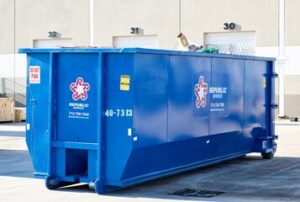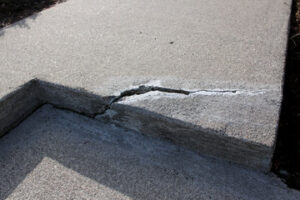SEO is optimizing web pages to improve their visibility in search engine results pages. It includes both qualitative content principles and technical improvements. It also focuses on maintaining and enhancing a website’s presence over time. Contact Rank Boss now!
Humans retain 10% of what they read, 20% of what they hear, and 30% of what they see. This is why it is important to use pictures in your articles.

Keywords are the foundation of any effective SEO strategy. They help search engines understand the context and purpose of content and determine a website’s relevance to users’ queries. Keywords are also a key tool for connecting with users who may be interested in your products or services. By strategically selecting keywords, you can improve your website’s visibility, attract targeted traffic, and increase conversions and revenue.
To identify the right keywords for your content, it’sconsider both the search volume and competition of each term. This is particularly important when targeting highly competitive industries, such as legal, insurance, or drug and alcohol rehabilitation. You can find potential keywords using a variety of tools, including Google Keyword Planner and Senuto. To maximize your chances of success, choose the most relevant keywords for your business and ensure that they are well-aligned with user intent.
Once you’ve selected the keywords you want to target, it’s important to incorporate them into your content in a natural and subtle manner. This will help ensure that your content is relevant to the search query and will rank higher in search results. You can use the keywords in your title, meta description, URLs, internal links, and image and video file names.
While it’s easy to fall into the trap of over-using keywords, remember that quality takes priority over quantity. Using too many keywords can detract from the user experience and is against Google’s terms of service.
There are several different types of keywords, but the most important ones for your business are navigational and informational. Navigational keywords are search terms that include your company’s name and are intended to drive traffic to your website. Informational keywords are search terms that don’t have a buying gist but provide valuable information to the user. They can include phrases like how to, what is/are, best….
A successful SEO campaign starts with identifying and selecting the right keywords. By doing so, you can create relevant and helpful content for your audience that will help them make the right decisions when purchasing your product or service.
Content
Content is the foundation of a website, and its importance in SEO cannot be overstated. Without quality and optimised content, search engines will not be able to index websites correctly, and they will not be ranked in search results pages (SERPs). Moreover, the right type of content can help you gain links from other authoritative sites, which can also boost your rankings.
However, writing effective SEO content requires a thorough understanding of user intent and keyword research. This ensures that the content is based on real-world user queries and meets genuine informational needs. It is also important to make sure that your content is readable, which means keeping paragraphs short and using lots of line breaks. Additionally, it is important to refresh and update your content regularly to maintain relevance and performance.
SEO content is a critical component of any digital marketing strategy, and it has the power to transform your business. By incorporating the right keywords and optimising the title tag and meta description, you can improve your visibility in search results and attract more traffic to your site.
It is important to remember that search engines process 6.7 billion searches every day. This makes it essential to have a well-defined strategy and implement tactics that will allow you to stand out from the crowd and reach your target audience.
The best way to get your content noticed by search engines is to publish helpful and engaging articles that answer questions and solve problems. These types of articles are often featured as a ‘featured snippet’ in Google search results, which is a great way to increase your visibility in organic searches.
You can also promote your SEO content through social media, email marketing, and influencer partnerships to drive clicks and engagement. In addition, you should consider utilising a range of content syndication tools and paid advertising options to maximise the reach of your content. This will allow you to attract a wider audience and generate more leads.
Link building
Link building is a critical component of SEO, and it can be difficult to get started. But if you put in the effort, you can see real results over time. You can also hire a professional to help you reach your goals faster.
The first step is to figure out who your audience is. This will help you determine which keywords to target and what types of content they need. Then you can create a list of potential websites that you could reach out to for links. This list can include competitors, blogs, and other websites in your industry.
There are several ways to build links, including manually adding them, asking for them, and buying them. However, it’s important to remember that these techniques can lead to Google penalties. The best way to avoid penalties is to have a clean link profile. This means only using links from high-quality sites and not trying to manipulate the system.
In addition to traditional link building, you can also use social media and paid search to increase your visibility on the web. Social media can boost your brand awareness, and paid search can drive traffic to your website. However, it’s important to remember not to overspend on paid search. This can backfire and negatively affect your overall rankings.
Creating valuable, relevant content is one of the best ways to improve your SEO rankings. It can be an effective way to build a community of fans and customers, which can help you rank higher on search engines. The key is to create content that addresses your audience’s questions and concerns. This will make people want to share your content and links with others.
Another good method for improving your SEO is to use link-building tools, such as Semrush. These tools are useful for analyzing your competitors and ranking you on search engines. They can also help you optimize your site for SEO by showing you the best keywords and highlighting competitors’ weaknesses. These tools can be a great asset for any business, regardless of its size or industry.
Analytics
SEO analytics is a critical component of the search engine optimization (SEO) process, and it provides insights that can help businesses identify opportunities and threats. This data can be used to optimize website content and improve user experience, which is crucial for improving search engine visibility. Moreover, the data can also help businesses make informed decisions about their marketing spend.
SEO isn’t a one-time task and requires constant monitoring to ensure that your online presence is optimized for maximum effectiveness. SEO analytics helps you track the success of your on-page and off-page strategies, enabling you to adapt to changes in search engine algorithms. It also helps you assess the effectiveness of your link-building efforts and analyze the performance of other websites in your niche.
Analytics tools like Ahrefs Site Explorer and Search Console provide valuable information about your site’s organic search performance. These tools can reveal the best performing keywords, their search volume and the quality of your content. They can also show the number of incoming links and their quality, which can help you determine how effective your link-building strategy is.
While some people mistakenly think that SEO analytics is merely about tracking keyword rankings, this is incorrect. It goes much deeper than that, including assessing the quality of your traffic, identifying user intent, and analyzing on-site behavior. Furthermore, it can be used to identify potential issues with your website’s infrastructure or speed, which could have a direct impact on search engine rankings.
To get the most out of your SEO analytics, be sure to set measurable goals that are specific, measurable, achievable, relevant and time-bound (SMART). This will help you evaluate your results and track your progress over time. Also, it’s important to use a tool like Google Analytics that is synced with your Search Console account. This will allow you to analyze your organic traffic, find the best performing pages, and make data-driven improvements to your SEO efforts.
Finally, it’s important to understand that SEO analytics isn’t a guarantee of immediate results. It can take some time to see the effects of your efforts, but with consistent monitoring, you can keep up with changes in search engine algorithms and user behavior. In the long run, this will increase your website’s visibility and attract more visitors.








